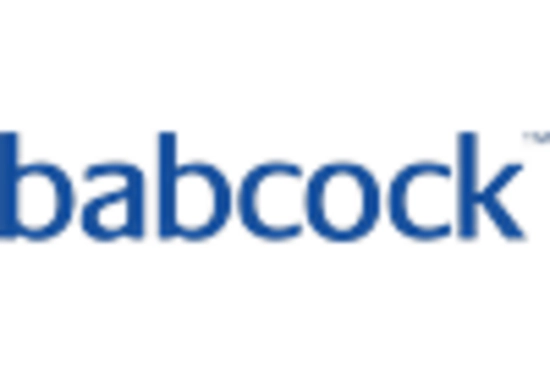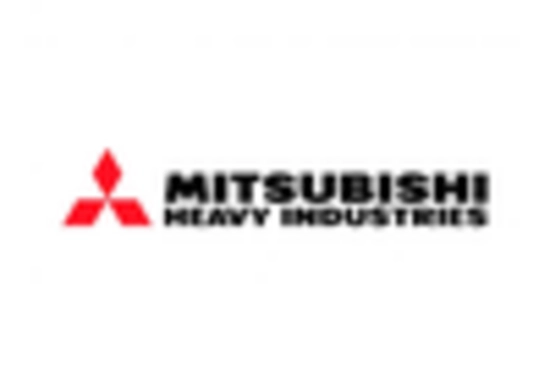Economic Factors and Cost Efficiency
Economic factors significantly influence the Shipboard Incineration Market, particularly in terms of cost efficiency. Shipping companies are under constant pressure to optimize operational costs while adhering to environmental regulations. The implementation of efficient incineration systems can lead to substantial savings in waste disposal costs, as it reduces the need for alternative waste management methods. Furthermore, the rising costs associated with landfill disposal and the potential penalties for non-compliance with environmental regulations are driving companies to invest in incineration technologies. As a result, the market is expected to grow as more shipping operators recognize the long-term financial benefits of adopting efficient shipboard incineration systems. Analysts estimate that the market could expand by 6% annually as companies prioritize cost-effective waste management solutions.
Increasing Maritime Trade and Shipping Activities
The Shipboard Incineration Market is poised for growth due to the increasing maritime trade and shipping activities. As global trade continues to expand, the number of vessels operating at sea is also on the rise. This increase in shipping activities generates a corresponding rise in waste production on board ships, necessitating effective waste management solutions. Incineration offers a viable method for disposing of waste generated during voyages, thereby ensuring compliance with environmental regulations. The International Maritime Organization projects that global shipping volumes will increase by 3% annually over the next decade, further driving the demand for shipboard incineration systems. Consequently, the market is likely to experience robust growth as shipping companies seek to implement efficient waste disposal methods to accommodate the rising volume of maritime trade.
Regulatory Compliance and Environmental Standards
The Shipboard Incineration Market is increasingly influenced by stringent regulatory compliance and environmental standards. Governments and international bodies have established regulations to minimize the environmental impact of waste disposal at sea. For instance, the International Maritime Organization (IMO) has set guidelines that mandate the reduction of harmful emissions from ships. This regulatory landscape compels shipping companies to adopt advanced incineration technologies that meet these standards. As a result, the demand for compliant shipboard incineration systems is expected to rise, driving market growth. The industry is projected to witness a compound annual growth rate (CAGR) of approximately 5% over the next five years, as companies invest in upgrading their waste management systems to align with evolving regulations.
Technological Advancements in Incineration Systems
Technological advancements play a pivotal role in shaping the Shipboard Incineration Market. Innovations in incineration technology, such as improved combustion efficiency and emission control systems, are enhancing the effectiveness of waste disposal on ships. These advancements not only reduce the environmental footprint but also optimize operational costs for shipping companies. The integration of automation and real-time monitoring systems is becoming increasingly prevalent, allowing for better management of incineration processes. As a result, the market is witnessing a surge in demand for modernized incineration systems, which are expected to account for a significant share of the industry by 2030. The ongoing research and development efforts in this sector indicate a promising future for technologically advanced shipboard incineration solutions.
Shift Towards Sustainable Waste Management Practices
The Shipboard Incineration Market is experiencing a notable shift towards sustainable waste management practices. As environmental awareness grows, shipping companies are increasingly seeking eco-friendly solutions for waste disposal. Incineration, when executed correctly, can significantly reduce the volume of waste generated on vessels, thereby minimizing the burden on marine ecosystems. This trend is further supported by the rising adoption of circular economy principles within the maritime sector, which emphasizes waste reduction and resource recovery. Consequently, the demand for sustainable shipboard incineration systems is likely to increase, as companies strive to enhance their environmental credentials. Market analysts predict that this shift could lead to a 7% increase in the adoption of sustainable incineration technologies by 2028.


















Leave a Comment